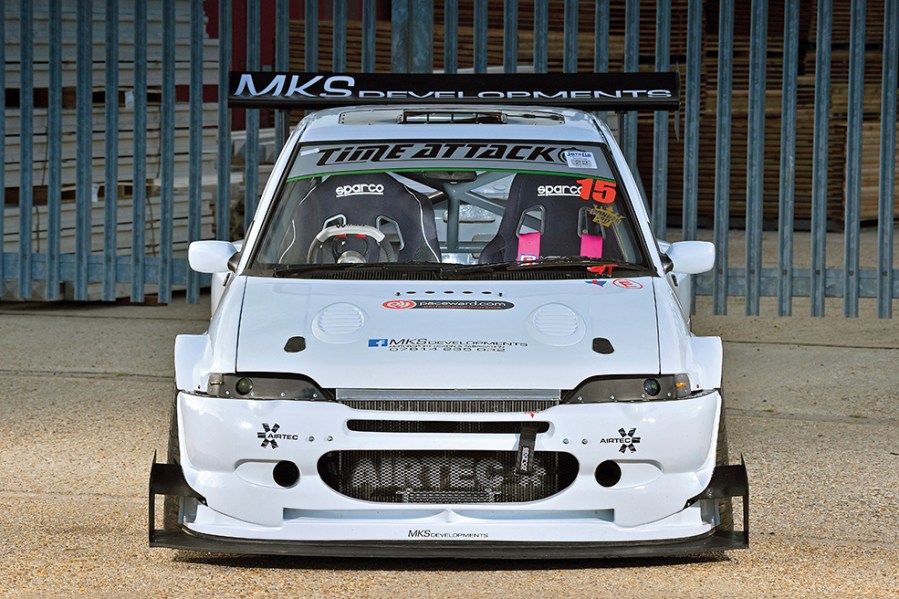How air flows under or over your modified car is critical for both its performance and your safety. We investigate the key principles in our car aerodynamics guide.
‘Aero’ is a wonderfully vague catch-all phrase that the car community loves to throw around when talking about a certain genre of modification, but what does it actually mean? Well, in essence, aerodynamics is the study of moving air, in particular when it comes into contact with an object – in this case, a car. It’s highly technical, but thankfully the experts have already done the equations for us. Instead, we can simply focus on picking out all the juicy bits that’ll make our cars go faster.
Everyone reading this will probably have seen race cars and seriously quick road cars draped in fancy carbon fiber aids, but far from just giving them an aggressive get-out-of-my-way appearance they are there to do a specific job. And that job is to direct air into places you want it and divert it away from areas you don’t.
In doing so you can actually use the pressure of the air as you drive through it to gain performance and safety advantages. Get it wrong, and all you will do is increase your car’s drag and therefore hinder its performance. So, in this car aerodynamics guide, we’ll investigate some of the key design basics and how to utilize them on your own builds.
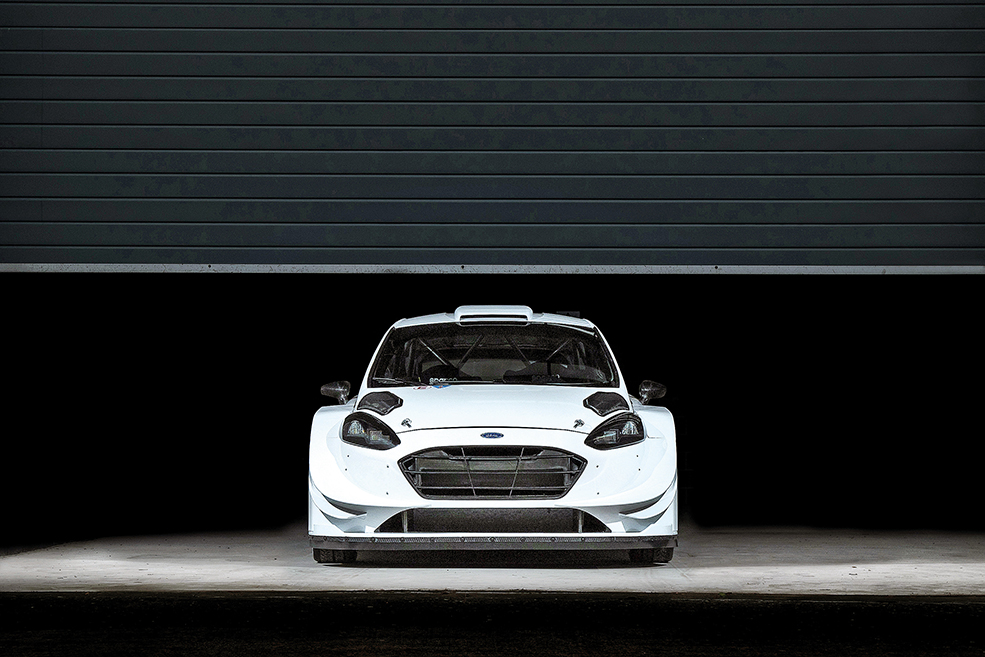
What are car aerodynamics?
How your car moves through the air is a critical combination of events that have a direct impact on its performance, stability and safety. At the simplest level, if you imagine the front of your car when you are driving, the air you are hitting can either go under or over it. The point on your front bumper at which the airflow divides to go either over or under the car is called the stagnation point. From here, the air underneath the car has to deal with objects that create a lot of drag: the wheels, exhaust, driveshafts and suspension components are all lumpy, drag-inducing objects.
Drag Co-efficients
Aerodynamic drag is the force that directly opposes the motion of a car. To be specific, about a third of your car’s overall drag comes from the underside. On top of this, another third comes from the air going over the car (the whole exterior) and the remaining third comes from the airflow through your grille, radiator, intercooler and through your engine bay. Every production car goes through testing to assign it a number, known as a drag coefficient, or Cd. The lower the number, the lower the car’s drag, and when you consider that at motorway speeds over half of the power required to maintain your speed goes towards overcoming drag, you start to see how important this figure is, especially for fuel economy.
Typical figures for Cd are in the region of 0.3-0.4 for production road cars. Some cars are particularly aerodynamic, such as the new Porsche Taycan, which has a Cd of just 0.22. On the other end of the scale, open-wheel race cars have a much higher drag coefficient thanks mainly to the rotation of the wheels, which creates a lot of drag. An F1 car, for example, has a Cd in the region of 1.0.
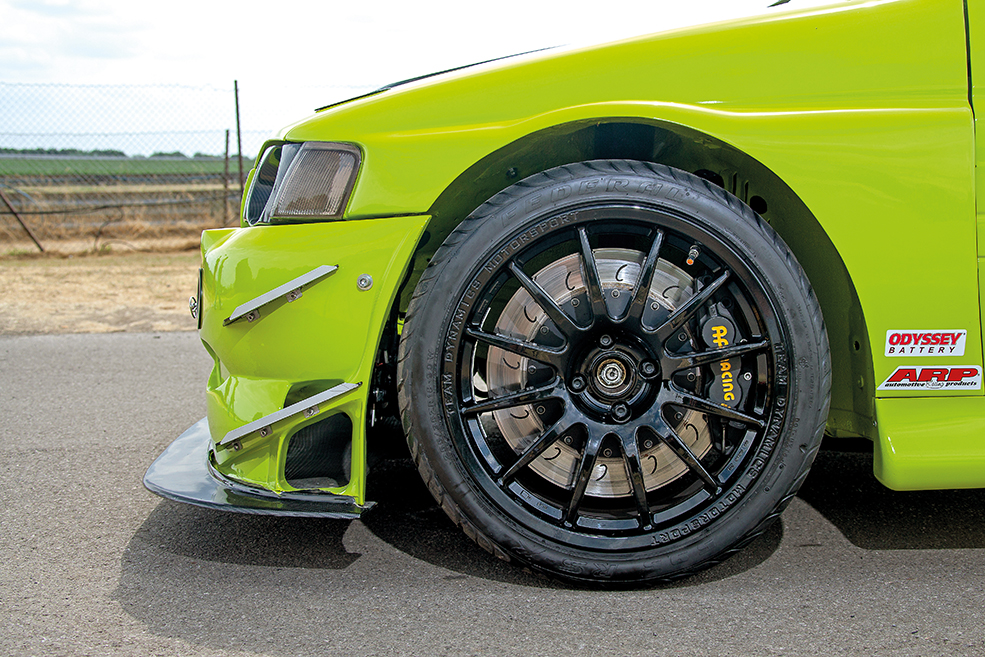
What does a splitter do?
Bolting on a large front splitter to your car is a fairly easy way to add downforce, and effectively pushes the front of the car into the ground at speed. This is great for cornering and braking, where you need a high level of front-end grip. Another plus is that it reduces the proportion of lift-inducing airflow that runs underneath the car, and instead directs it over the top of the car. A smaller, knock-on downside to a front splitter is that it increases the frontal area of the car, which has a direct relationship with drag – but the advantages outweigh the disadvantages when grip is critical. On race cars, a low, protruding front splitter is a common sight, but that’s only worth doing on smooth, flat circuit tarmac and if your car has stiff suspension.
On a road car, it’s a fine balance as to how low you can go without ripping one off when pulling into the driveway. Another method of reducing the portion of airflow underneath the car is a little simpler: if you lower your car on coilovers or stiffened lowering springs, less airflow will naturally run under the car. This reduces lift and drag at the same time, which is why cars like the Ford GT have systems that actually lower the car by 50mm when in top speed and track modes. Lowering your car has more benefits that you might think! Be sure to check out our pick of the best car suspension brands.
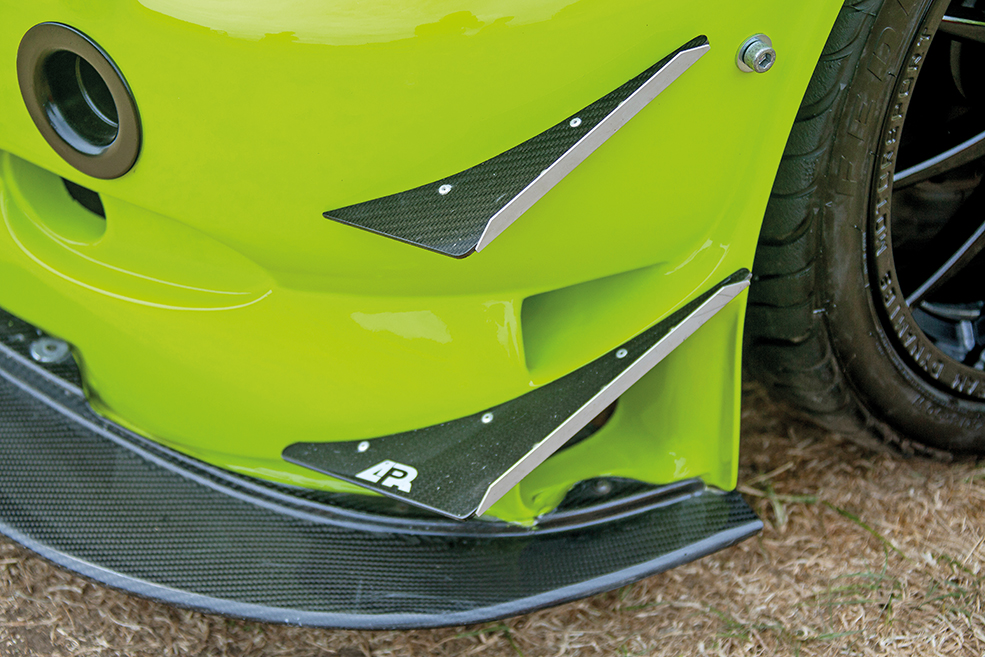
What do canards do?
Bumper canards (also referred to as dive planes) are becoming increasingly popular in the tuning scene and, like a front splitter, they increase downforce at the front of the car. Usually a carbon fiber construct, you bolt them to the sides of the front bumper, most commonly in sets of four. They also direct airflow away from underneath the car, which is highly desirable for reducing lift, but they do increase drag as a result. Canards only have a noticeable impact at higher speeds and are best used to fine-tune the aerodynamic characteristics of the car. For road car use, it’s questionable as to whether canards are a justifiable performance mod.
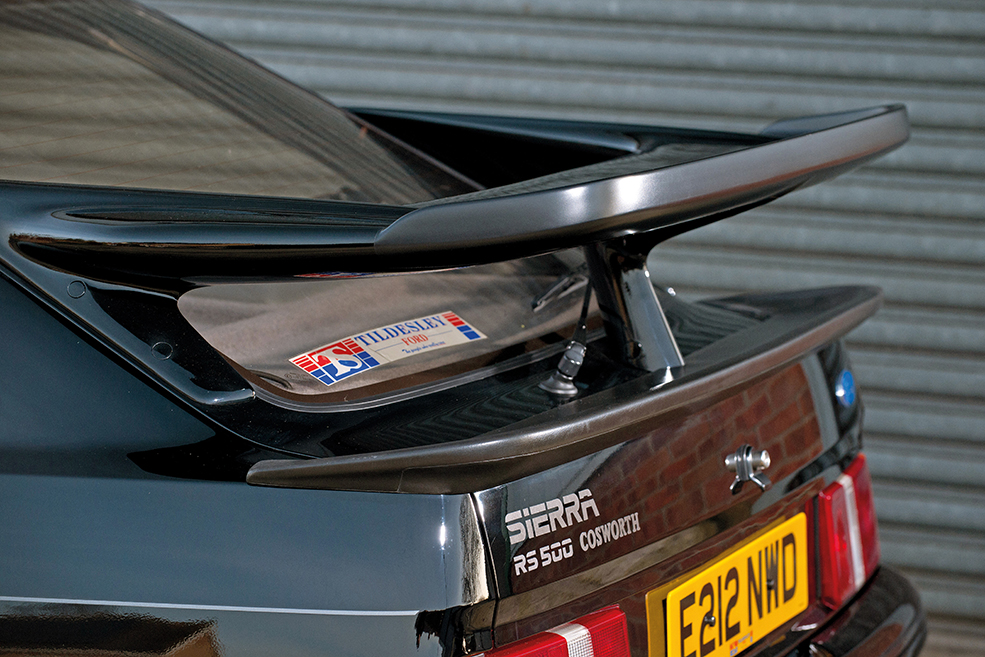
What does a Rear Wing do?
Just as splitters increase downforce at the front of the car, a rear wing provides downforce at the rear. People often refer to them as spoilers, which is technically incorrect.
A spoiler is there to ‘spoil’ any undesirable flow of air over the rear of a car (the clue’s in the name), in order to reduce lift or increase fuel efficiency. A wing, as fitted to many racers and to the rear of the Sierra and Escort Cosworths, is a device that proactively creates downforce at the rear, in order to increase rear-wheel grip and add stability. The rear wing on the Sierra Cosworth produces 70-to-80kgs of downforce at 100mph, and the Escort Cosworth’s rear wing gives 40-to-50kg of downforce at 100mph, so you can see how effective they are at offering grip over the rear wheels – as anyone who has driven a three-door Sierra without a rear wing will testify.
The angle of attack for the blade of the wing is critical; it has a large impact on aerodynamic drag, and also effects the way the downforce is distributed. For example, the Escort Cosworth rear wing has a different angle of attack to the Sierra’s due to being 4WD not RWD. The shape and positioning of the wing is also vital, and many aftermarket rear wings offer adjustability.

Track-focused Wings
If you’re serious about going fast on track, then buy a wing that comes with some CFD (computational fluid dynamics) data – this can link the amount of downforce, drag and power consumption with speed. That way you know that, at 100mph, you have the equivalent weight of three fully-grown male badgers sitting on the back of the car (or whatever it may be). It would be even better to invest in some wind tunnel time, but that costs serious bucks and for most road and track cars simply buying a decent, lightweight rear wing is sufficient.
A Gurney flap (named after American racing driver Dan Gurney, who first used the concept successfully in open-wheel racing in 1970s) is sometimes fitted to rear wings, as with the RS500. This is a piece of technology that us car nuts have borrowed from aeronautics. A small strip of material, usually at a right angle to the surface of the wing, helps a clean separation of air from the wing and maximizes downforce.
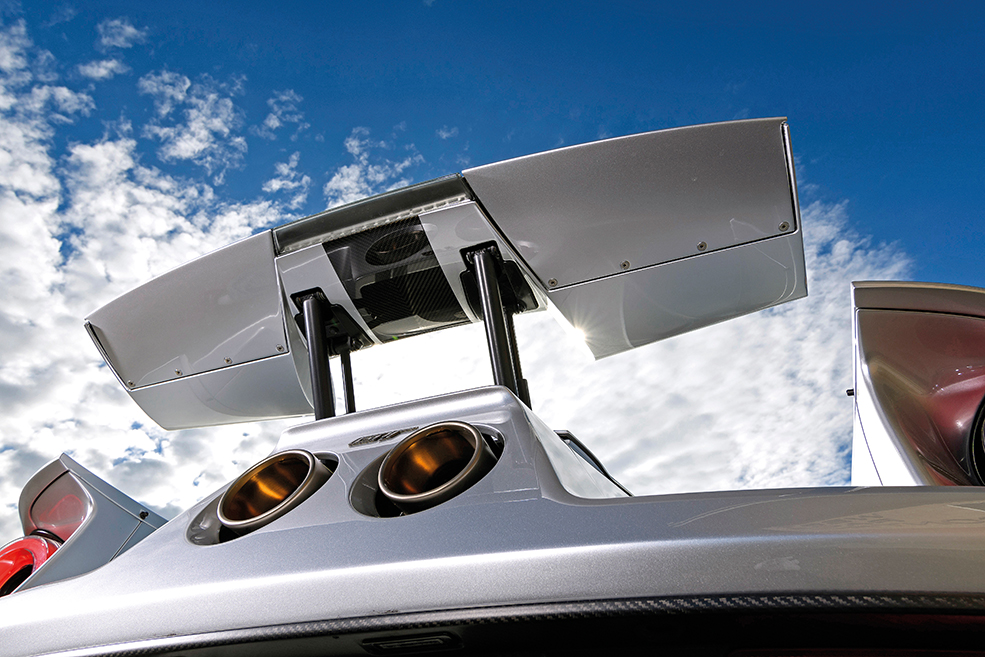
What does a Spoiler do?
Many performance cars come fitted with spoilers as standard, and this isn’t just for aesthetic reasons – safety plays a large part here too. Spoilers reduce the turbulent airflow at the back of the car by creating a clean separation of flow, which reduces unwanted lift. This might be worth considering before you go unbolting your car’s standard spoiler! Active rear spoilers, such as the one found on the latest Ford GT (which, when extended is technically a rear wing, but when is hidden is a spoiler) double up as air brakes. As such, they not only offer stability when on the move, but also huge amounts of drag under heavy braking to help slow the car, similar to when a plane lands.
Aerodynamic aids don’t just have to be on the front or rear of the car: take the humble five-door Sierra as an example; early models came without the little rubber strips around the rear quarterlight windows and as a result suffered badly from cross-winds and felt quite unstable at higher speeds. This was rectified by Ford in 1985, when the firm introduced rubber strips (known as strakes) on later models.
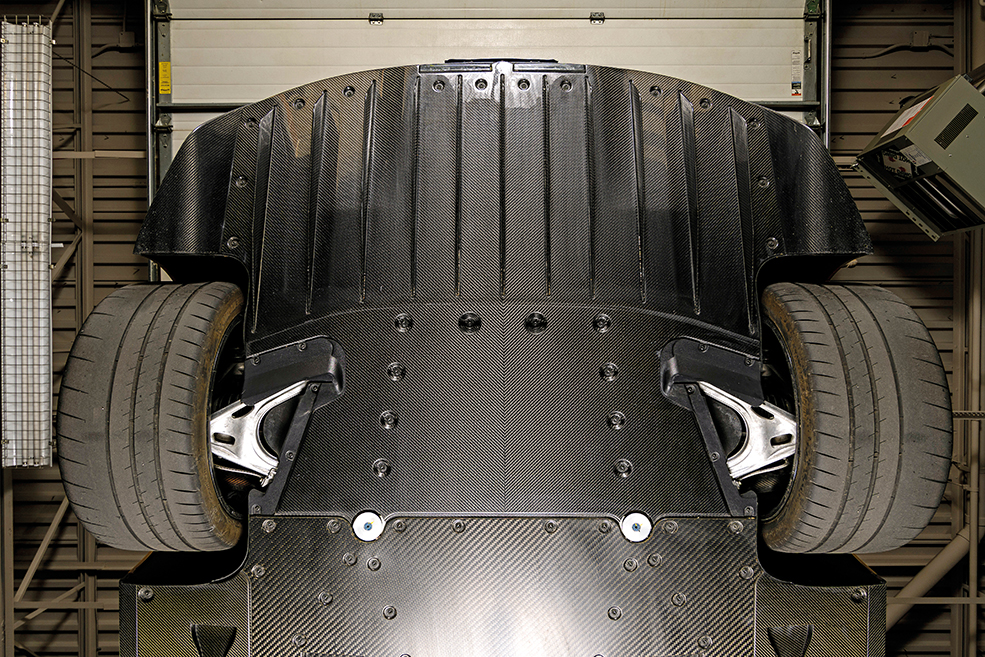
What does an Undertray do?
You can make big gains by optimizing the airflow underneath your car, which is why everyone’s so keen to snap a pic of the underside of new F1 cars – there’s more going on under there than you might expect.
The main goal is to create an area of low pressure underneath the car so that there’s not an opposing upwards force fighting the downforce that the splitters and spoilers create. The main way to create an area of low pressure is to accelerate the airflow underneath the car. This is linked to Bernoulli’s principle, which states that an increase in air speed results in a reduction in pressure.
An entirely flat floor that completely bypasses the drag-creating underfloor area would be the best solution. You’ll typically only see this technique adopted in full-on race cars, but another solution for track cars is to use a splitter or undertray that extends underneath the engine. This minimizes drag created by engine bay components. The technology has even found its way onto fuel-efficient road cars, which use an extended front lip and part undertray to reduce drag and improve fuel economy.
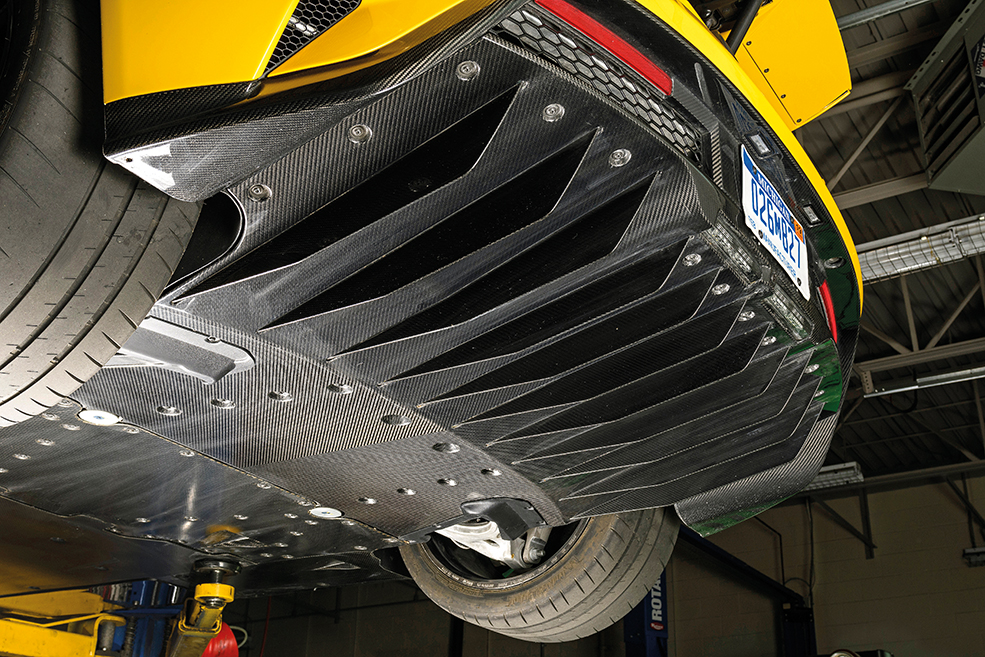
What does a Rear Diffuser do?
Rear diffusers help the high-speed airflow underneath the car rejoin the slower-moving air behind the car. This mixing of different airspeeds often gives rise to unwanted drag, so car designers will use a diffuser to expand and slow the air at the back of the car before it joins the wake behind the car.
It’s common to use longitudinal fins in the diffuser as these promote rear end high-speed stability. This is because they can better control the direction and speed of the airflow.
Race and track cars often have diffusers, but not always at the correct angle. Believe it or not, there is a window of effectiveness for a rear diffuser, which – although a subjective calculation – is somewhere between seven and ten degrees.
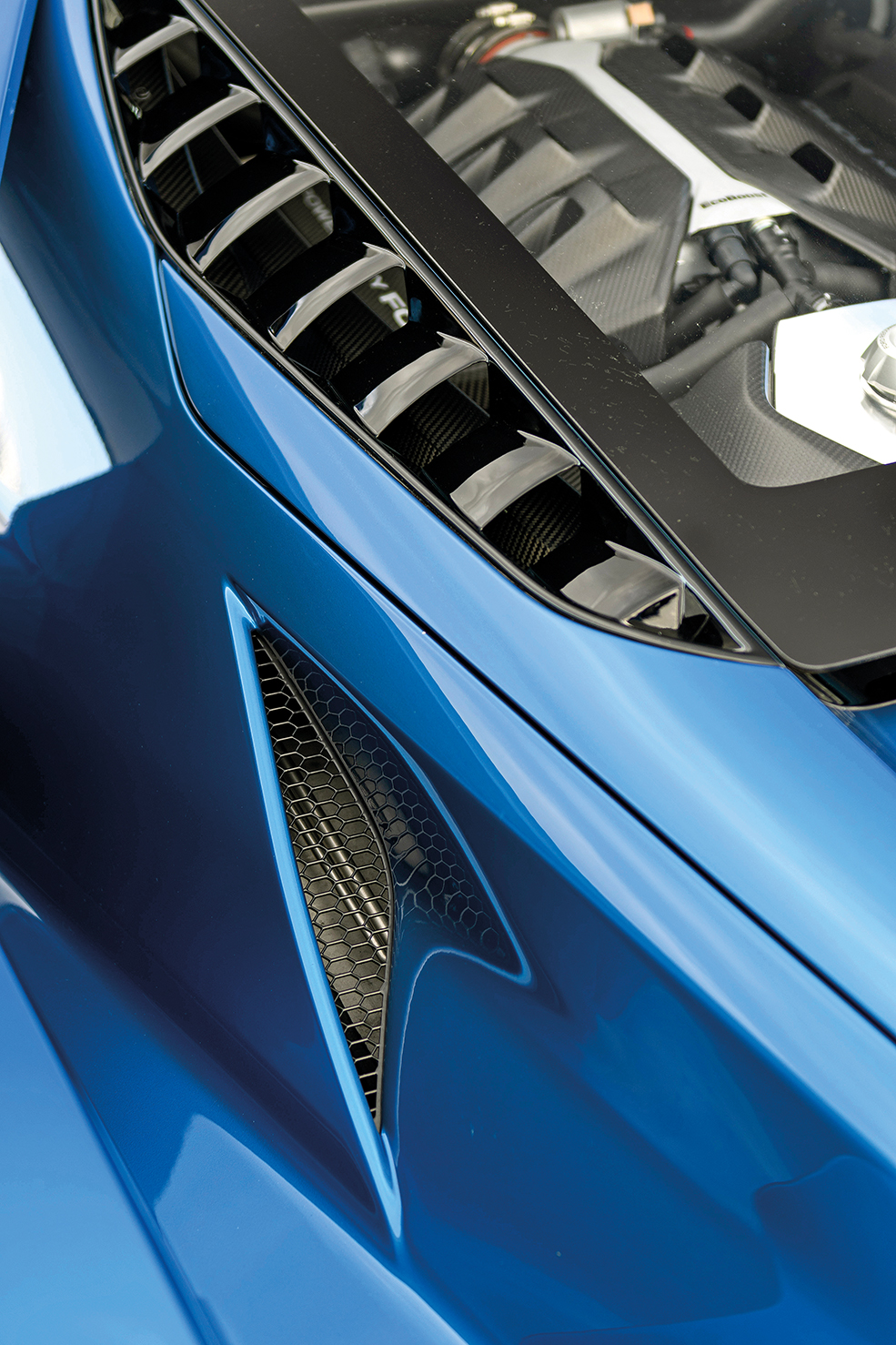
What does Ducting do?
Ducting is vital in any car but particularly in turbocharged cars where heat management is more of an issue. Be it an intercooler, radiator, oil cooler or brakes, having proper ducting is the only way to ensure that airflow gets to the object you are trying to cool.
For example, if you’ve got a front-mount intercooler with big gaps around the sides and between your bumper, then the air will always take the path of least resistance as opposed to flowing through the core and maximizing cooling. If you use ducting, you can offer the air no choice but to go through the item you want to cool.
Ducting also applies to cars going for top-speed runs such as at the Bonneville Salt Flats, where it’s commonplace to see duct tape over the bonnet shuts to reduce the formation of drag. In the UK these techniques have been used by the likes of Reyland Motorsport with its previous Escort Cosworth project, which hit 200mph at Bruntingthorpe. You need to pay careful attention to this so that the car still receives the necessary levels of cooling to the engine, though!
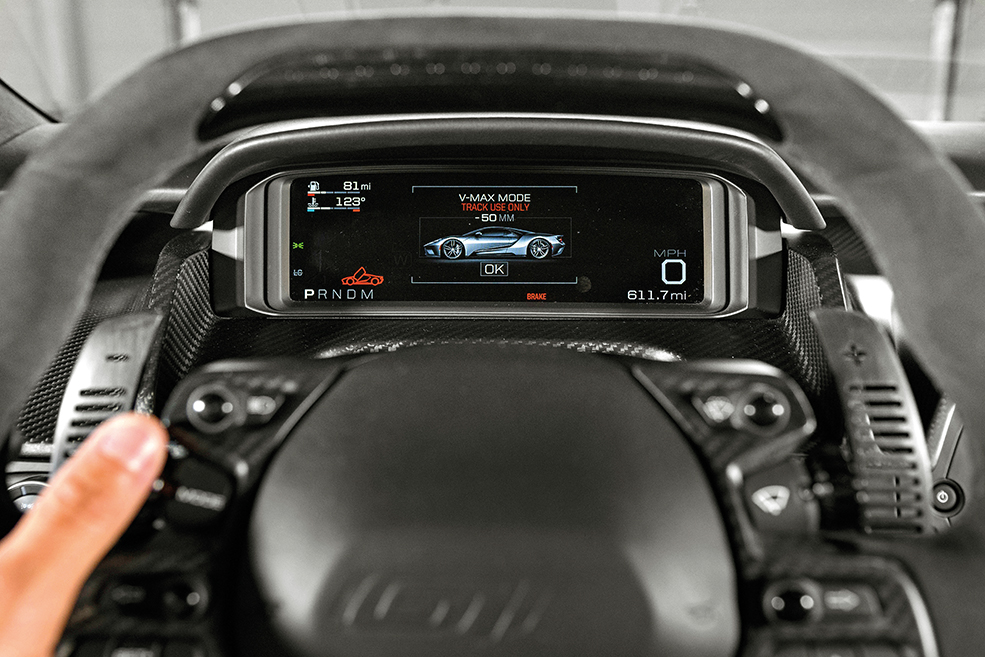
What are Active Aerodynamics?
The latest aero technology is active aerodynamics, which many manufacturers are now fitting to production vehicles. By having components such as grille flaps that can move, the car’s ECU can control the aerodynamics. For example, Ford’s Active Grille Shutter features motorized horizontal vanes that open and close to alter the amount of air going through the grille and into the cooling package. The effect this has is twofold: first, it helps the engine warm up quicker and thus reduces exhaust emissions; second, it helps reduce aerodynamic drag – which Ford claims can be by as much as six per cent when the grille is fully closed.
This new technology is designed to improve economy but has potential benefits for speed-seekers too, with machines like the Ford GT supercar making use of the same principles to improve performance. For example, when the rear wing is stowed, the front splitter and undertray produce an imbalance in downforce, so the GT has active slots in the front bumper that allow air to bypass the effects of the splitter; when the rear wing is up and rear downforce is increased, these front slots close and you get the full effect of the front downforce too. The rear wing itself is also able to take-up different angles (doubling as an air brake when needed, too) and features a retractable Gurney flap.
Unless you’ve got deep pockets, active aero like this is unlikely to be at the top of your project car to-do-list. But hey, it’s cool to know it exists, right?

